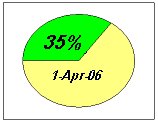Forgotten in New Orleans ...
This is from an article I co-wrote with Susan Howell. It was published on the OpEd page of the New York Times on April 20, 2006:
No discussion of New Orleans after Hurricane Katrina fails to focus on the stark class and racial differences that supposedly determined its residents' fates. The city's Lower Ninth Ward has become an international symbol of the neglect suffered by low-income African-Americans, while the white middle- and upper-class neighborhoods on higher ground are portrayed as having hardly been affected. But as gripping as that story may be, it's an oversimplification.
New Orleans was also home to a large black middle class, which is now in a quandary. Although we are white, we know this firsthand. Along with tens of thousands of black middle-class families, we lost our homes and our belongings in the low-lying section of the city called New Orleans East, the northern part of the Ninth Ward.
For more than 30 years, New Orleans East was a haven for the emerging black middle class. It was the suburban "black flight" neighborhood: as the central city and inner suburbs deteriorated, middle-class and educated black citizens went there seeking safer suburban lives, with better schools and houses with lawns. The relatively low housing prices in New Orleans East made this ideal affordable, and black families in this neighborhood did not face the racism they might have in the white suburbs.
Many of the neighborhood's residents were the first homeowners or college graduates in their families. Households commonly included two wage earners, often stretched to the limit to pay mortgages and provide for their children. Many were also supplying financial aid to relatives in the central city.
Now the Bring New Orleans Back Commission has designated parts of New Orleans East "delayed recovery," meaning that residents can rebuild only at their own risk, without any guarantee that there will be basic services, like working sewers or police protection, in the near future.
The two of us can feel comfortable resettling anywhere in the metropolitan area. But for black families, the decision is not so simple. Many would rather not deal with racism in the white suburbs, some of which are also unaffordable for these displaced families. But how do we ask them to return to the central city areas that many worked so hard to leave?
These are people who overcame the odds, played by the rules, broke out of the infamous "cycle of poverty," bought homes, built families and enjoyed a taste of what Americans define as success. And they are being told that their community is not on the immediate recovery list.
It should come as no surprise that these residents are fighting the commission and the planners to save their neighborhood. Unlike many of their black brothers and sisters, they had a piece of the American pie.
Susan E. Howell is a political science professor at the University of New Orleans. John B. Vinturella is a business consultant.
No discussion of New Orleans after Hurricane Katrina fails to focus on the stark class and racial differences that supposedly determined its residents' fates. The city's Lower Ninth Ward has become an international symbol of the neglect suffered by low-income African-Americans, while the white middle- and upper-class neighborhoods on higher ground are portrayed as having hardly been affected. But as gripping as that story may be, it's an oversimplification.
New Orleans was also home to a large black middle class, which is now in a quandary. Although we are white, we know this firsthand. Along with tens of thousands of black middle-class families, we lost our homes and our belongings in the low-lying section of the city called New Orleans East, the northern part of the Ninth Ward.
For more than 30 years, New Orleans East was a haven for the emerging black middle class. It was the suburban "black flight" neighborhood: as the central city and inner suburbs deteriorated, middle-class and educated black citizens went there seeking safer suburban lives, with better schools and houses with lawns. The relatively low housing prices in New Orleans East made this ideal affordable, and black families in this neighborhood did not face the racism they might have in the white suburbs.
Many of the neighborhood's residents were the first homeowners or college graduates in their families. Households commonly included two wage earners, often stretched to the limit to pay mortgages and provide for their children. Many were also supplying financial aid to relatives in the central city.
Now the Bring New Orleans Back Commission has designated parts of New Orleans East "delayed recovery," meaning that residents can rebuild only at their own risk, without any guarantee that there will be basic services, like working sewers or police protection, in the near future.
The two of us can feel comfortable resettling anywhere in the metropolitan area. But for black families, the decision is not so simple. Many would rather not deal with racism in the white suburbs, some of which are also unaffordable for these displaced families. But how do we ask them to return to the central city areas that many worked so hard to leave?
These are people who overcame the odds, played by the rules, broke out of the infamous "cycle of poverty," bought homes, built families and enjoyed a taste of what Americans define as success. And they are being told that their community is not on the immediate recovery list.
It should come as no surprise that these residents are fighting the commission and the planners to save their neighborhood. Unlike many of their black brothers and sisters, they had a piece of the American pie.
Susan E. Howell is a political science professor at the University of New Orleans. John B. Vinturella is a business consultant.





